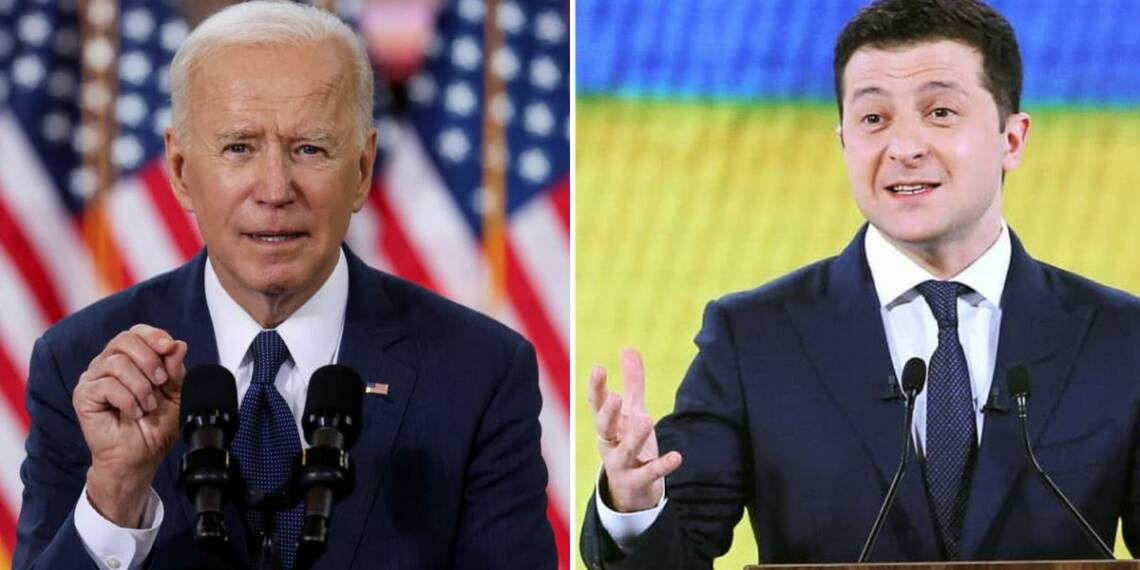Since US President Joe Biden has ascended the oval office, the United States has increased the rhetoric against Russia. The Democrat President, in line with his party, have demonized Russia which has led to a major crisis erupting at the Ukraine-Russia border.
The United States has been pushing major sanctions against Russia and had given Ukraine a faux enthusiasm to pursue an atypical hard stance against Russia. But Russia deterred the US aggression and calmed things down to acceptable levels at its Ukrainian border. However, the whole exercise has made Ukraine aware of the reality of the situation and also to the fact that NATO and Biden cannot be trusted.
In response to Kyiv’s delay in joining NATO, the Deputy Secretary of the Ukrainian Security and Defence Council, Major General Serhii Kryvonos said that he does not expect the country to be admitted. President Volodymyr Zelensky could only hope for “logistical assistance” from the Western military alliance, he said. He also proposed that the country begin looking at other assistance options
In the midst of rising tensions, Zelensky called NATO Secretary-General Jens Stoltenberg, pleading with him to place Ukraine on a path to potential membership. Zelensky also addressed UK Prime Minister Boris Johnson and Canadian Prime Minister Justin Trudeau, pleading with them to have the country join NATO. Moscow, on the other hand, has made the process complicated by openly opposing the proposal.
The Russian defence ministry directed its soldiers to return to their permanent stations last week but said the artillery would remain on the country’s western frontier. Zelensky lauded the decision afterward, claiming that it had eased tensions between the two countries. Despite Russia’s withdrawal, he warned his armed forces to remain “cautious” and on high alert.
President Volodymyr Zelensky tweeted, “The reduction of troops on our border proportionally reduces tension. Ukraine is always vigilant yet welcomes any steps to decrease the military presence and deescalate the situation in Donbas.”
US President Joe Biden has recently managed to reignite the Russia-Ukraine dispute. Biden forced Kyiv into outright violence against Russia in order to establish a new theatre of war. On the other side, Moscow has retaliated with diplomatic provocation and a major troop build-up on Ukraine’s eastern flank. Meanwhile, the US has been paying lip service to Kyiv and encouraging it to take on Russia.
But that was not enough, as even before Kryvonos spelled out his claims to look for other sources to deter Russia, Zelensky had himself asked the US and the western backers for clear signals. At the time, Zelensky had said, “Our citizens need clear signals that in the eighth year of the war, a country that is a shield for Europe at the cost of its lives, will receive support not just as partners, from the stands, but as players on the same team, directly on the field, shoulder to shoulder.”
To pursue his political and geopolitical agenda, Joe Biden has been looking to throw Ukraine under the bus. Biden’s ambiguous support to Ukraine has made it clear that pushing Ukraine to war with Russia is only a part of Biden’s larger anti-Russian campaign.
Biden hopes to divert focus away from Beijing by invoking an indirect war with Russia. Biden has succeeded to some extent, but if tensions on Russia’s border with Ukraine worsen, the US President will begin to refer to Russia as a bully.
Ukraine saw the swiftness and unfettered approach of the Russians even with the US claiming to support Ukraine. Ukraine cannot afford a war with Russia, and it now understands that the Biden administration has offered nothing more than a proverbial lip service and that is why looking elsewhere might be in Ukraine’s interests but in a direct war with Russia, no other country might come to support it.







